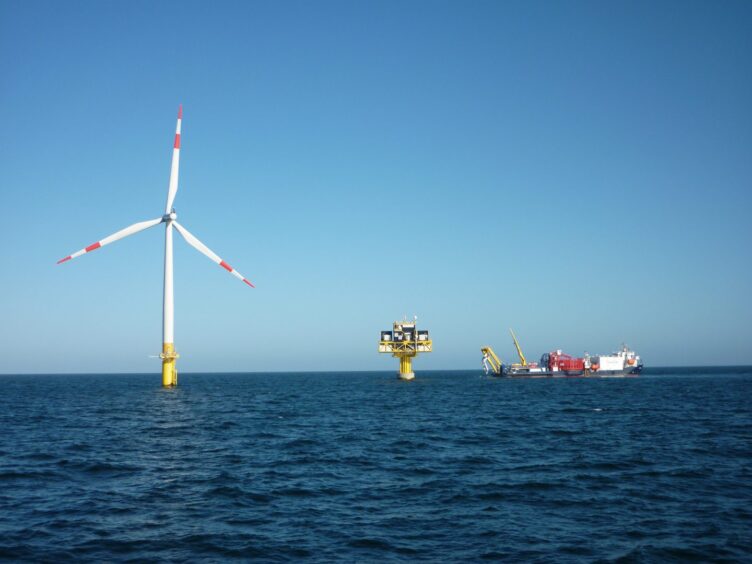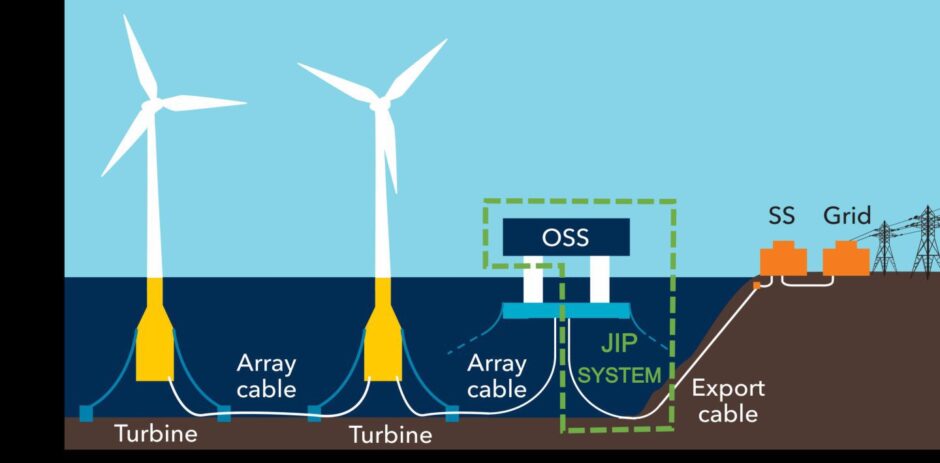
Norwegian energy firm DNV has completed the first phase of its joint industry project (JIP) aimed at establishing offshore substation standards for the growing floating wind sector.
DNV said the collaborative industry effort has brought together 38 participating companies including transmission operators, developers and supply chain firms to tackle challenges associated with floating offshore substations.
The number of floating offshore wind projects is increasing worldwide, with capacity is projected to exceed 260 GW by 2050 according to DNV’s 2023 Energy Transition Outlook (ETO).
As part of these floating wind projects, offshore substations serve as hubs to connect multiple turbines and transmit renewable energy to markets.
According to DNV, designing and implementing these substations present distinct challenges, including the need for high-voltage dynamic cables and electrical equipment that can withstand the movements of floating structures.
DNV said the JIP’s Phase 1 primary outcomes include affirming the feasibility of floating offshore substations (FOSS) and export cables, identifying technology gaps requiring attention, and highlighting the maturity of AC solutions compared to DC.
The project also carried out a feasibility analysis for generic floater types and dynamic export cable concepts.
DNV floating wind and cable design standards
DNV said it plans to incorporate the JIP’s findings in the next update of its standards for floating substations and dynamic cables, both scheduled for 2024.
Ørsted senior chief specialist and JIP chairman Claus Christensen said such standards are important in emerging industries, encouraging innovation and competition while ensuring safety and reliability.
“It has been very valuable to work alongside 38 leading companies covering all scopes and disciplines in this project,” Mr Christensen said.
“As the industry gains real project experience from designing and building floating substations, lessons learned need to be incorporated into the standard.”
DNV executive vice president Kim Sandgaard-Mørk said the company had previously developed the widely used standard DNV-ST-0145 for offshore substations, primarily focusing on bottom-fixed installations.
He said DNV initiated the JIP to develop standards specifically applicable to floating substations.
“During the past ten years, this standard had played a crucial role, serving as a foundation for certifying electrical offshore substations,” Mr Sandgaard-Mørk said.
“Through our predictive ETO research models, we recognized the growing trend toward floating wind.”
Benefits for entire renewables sector
DNV senior principal consultant and JIP project manager Kristin Berg said the project contributed to a joint understanding of the challenges in floating offshore substations.
“Collaboration among industry experts is always instrumental in technology and standards development, and this will ultimately be beneficial for the whole renewables sector, as we facilitate the scaling of floating offshore wind projects,” Ms Berg said.
Following the completion of the first phase, DNV said it will now invite existing and new participants to join the second stage of the JIP.
DNV said its ultimate objective is to support the scaling of floating wind with an acceptable level of technical, commercial and HSE risk, through robust guidelines.
Previous focuses for joint industry projects managed by DNV include subsea lifting and Arctic guidelines.
Recommended for you


 © Supplied by DNV
© Supplied by DNV © Supplied by DNV
© Supplied by DNV